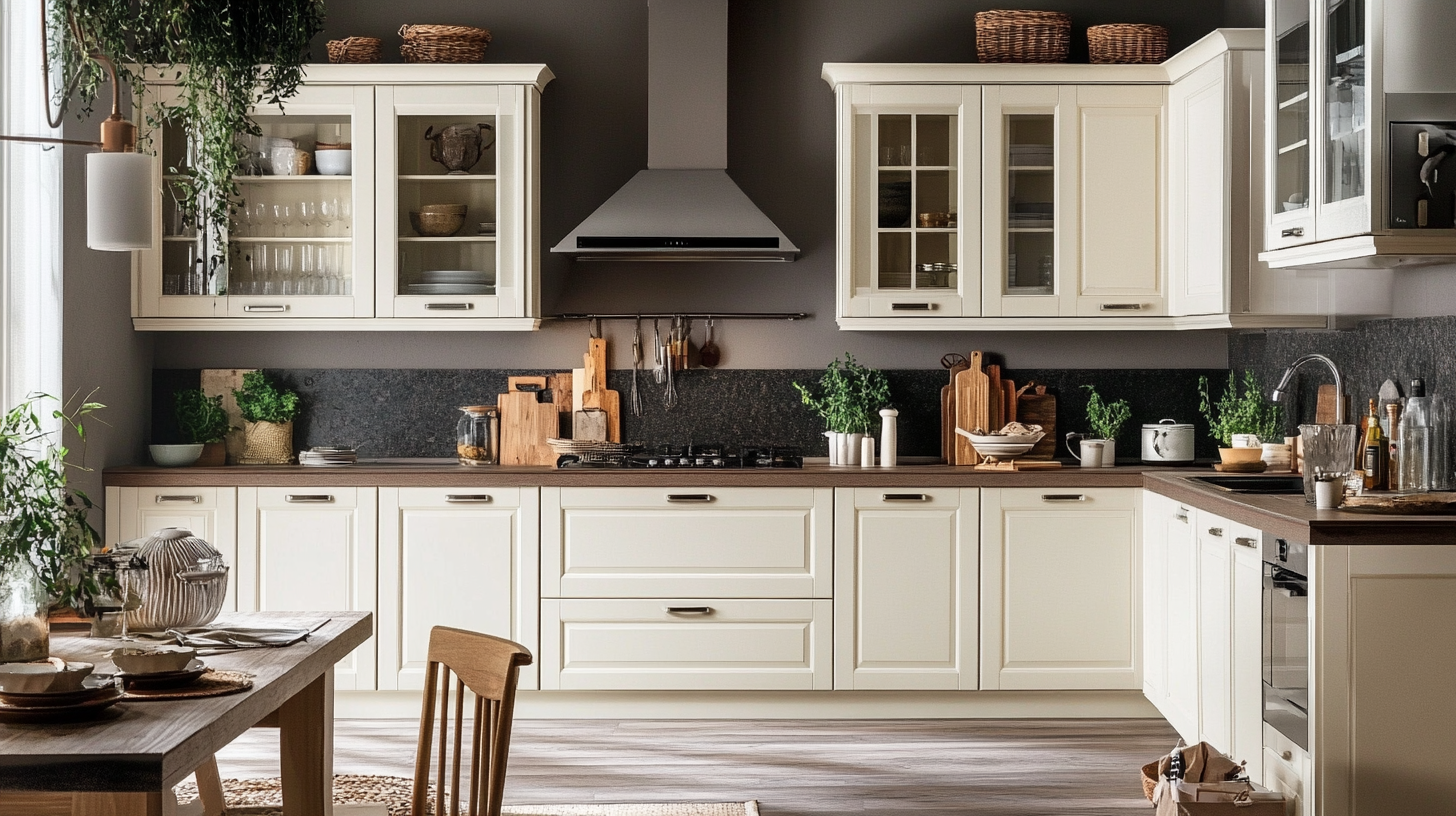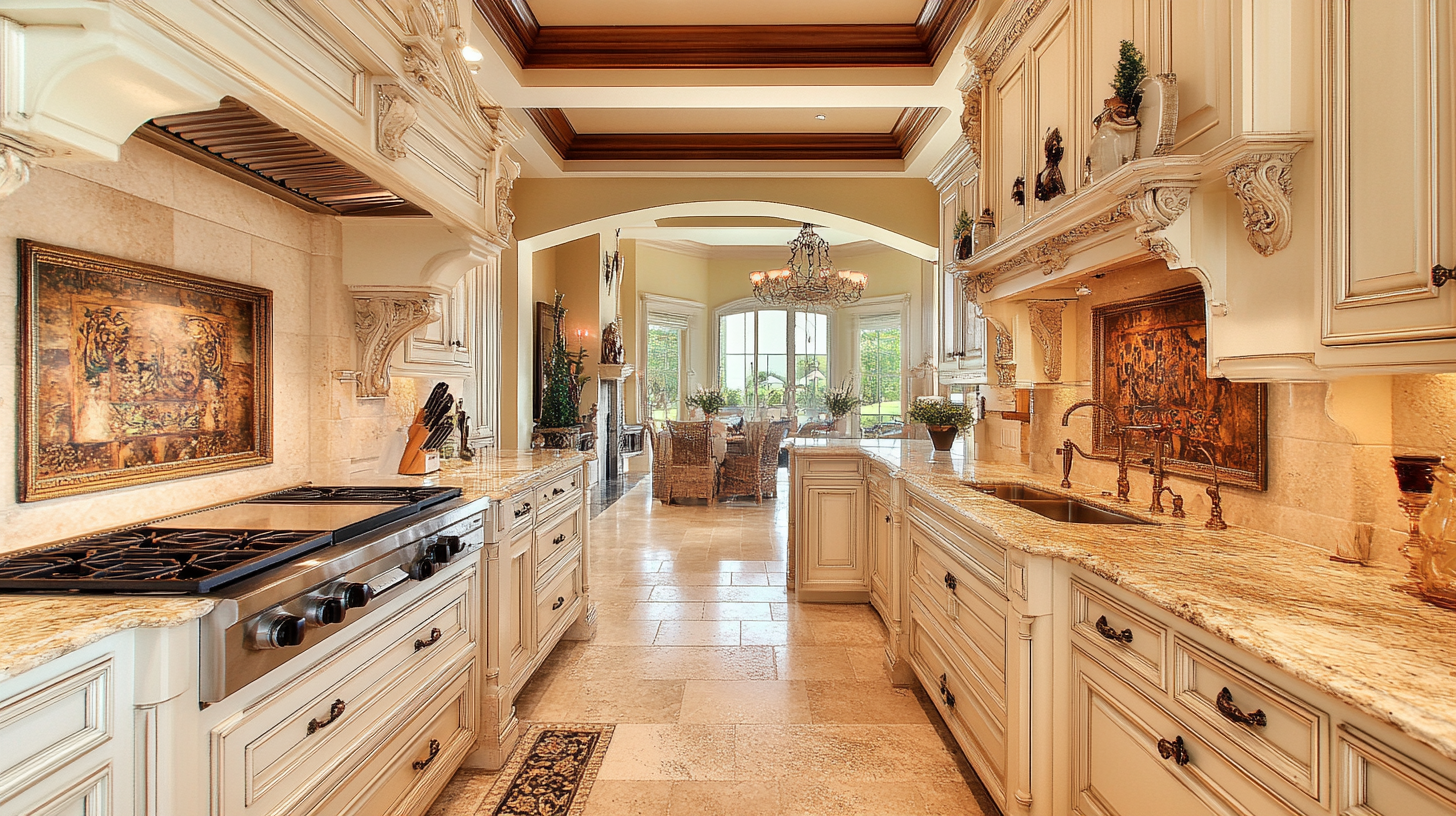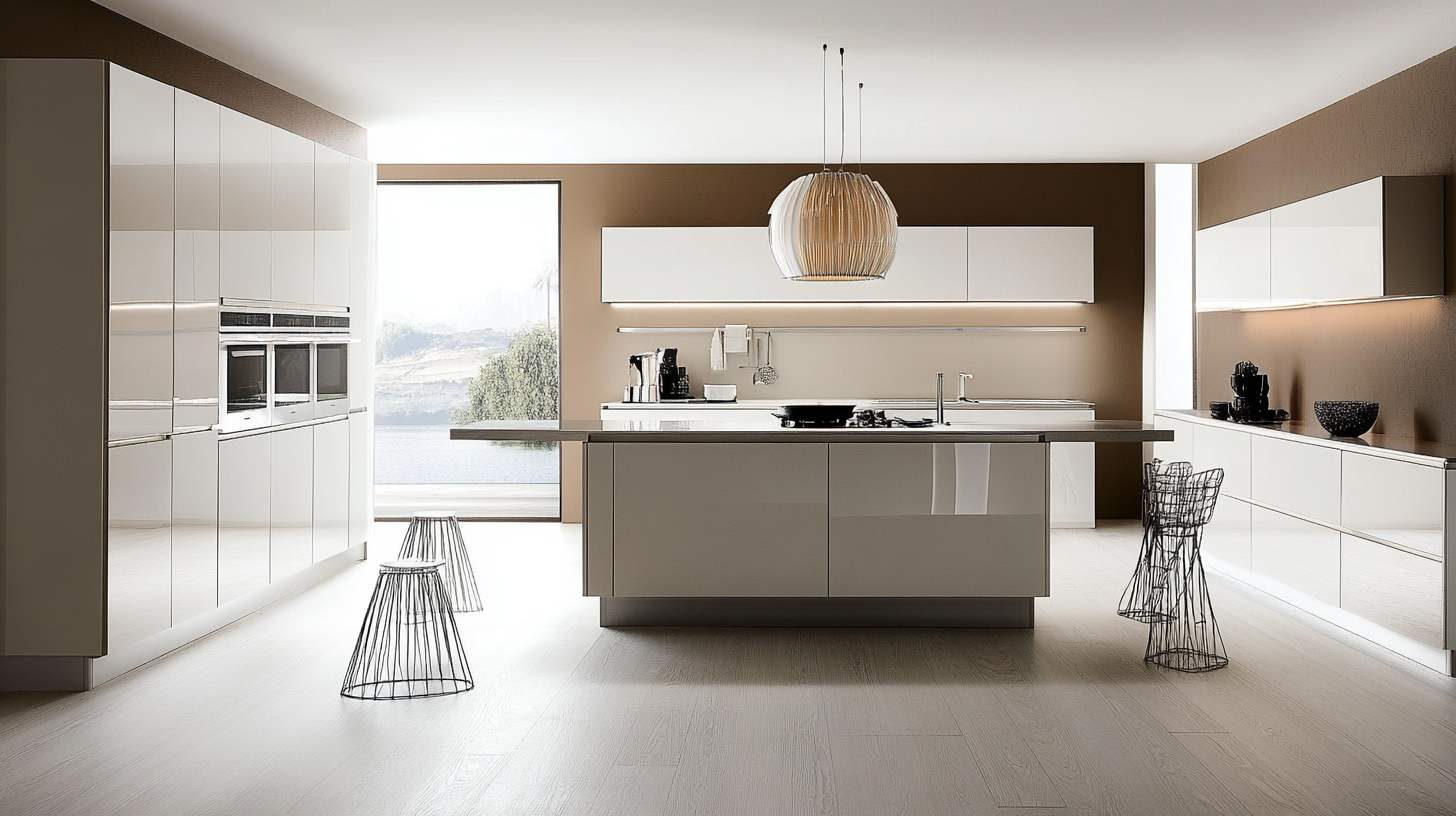How to Choose the Perfect Custom White Kitchen Cabinets for Your Space
When it comes to designing the heart of your home, the kitchen, selecting the right cabinetry is crucial for both aesthetics and functionality. Custom White Kitchen Cabinets have become a preferred choice among homeowners and designers alike due to their timeless appeal and versatility. Whether you are aiming for a classic, modern, or farmhouse style, these cabinets can seamlessly blend into any kitchen design, all while providing ample storage and organization options.
Choosing the perfect Custom White Kitchen Cabinets for your space can be an overwhelming task given the myriad of styles, materials, and finishes available. It’s important to consider how these cabinets will fit into your overall kitchen layout and complement your personal style. This blog will guide you through the essential factors to consider when selecting your custom cabinets, including size, design, and quality, ensuring that you create a kitchen that is not only beautiful but also tailored to meet your specific needs.

Exploring Different Styles of Custom White Kitchen Cabinets for Your Home
When it comes to designing the perfect kitchen, custom white cabinets have become a favorite choice among homeowners and designers alike. According to a recent report by the National Kitchen and Bath Association (NKBA), over 70% of kitchen renovations involve white cabinetry, signifying its timeless appeal and versatility. Custom white cabinets not only enhance the aesthetic of a kitchen, but they also provide an opportunity for personalization with various styles and finishes. Exploring different styles of custom white kitchen cabinets can lead to a significant impact on your home's overall look. Shaker-style cabinets, for instance, are currently trending due to their clean lines and minimalist design, making them ideal for contemporary and transitional spaces. On the other hand, traditional raised-panel cabinets offer a more classic feel, perfect for homes that reflect a rich history or ornate decor. Additionally, the rise of modern farmhouse styles has resulted in increased popularity of distressed white finishes, lending kitchens a charming, rustic vibe. The choice of cabinet finish also plays a crucial role in functionality and style. High-gloss white finishes can create a sleek and modern atmosphere, while a matte or soft-touch finish can give a warmer, more inviting feel. Research from the 2023 Kitchen & Bath Industry Show indicates that matte finishes are rising in popularity, with a growth rate of 15% year-over-year. This trend not only stands in contrast to high-gloss finishes but also reflects a shift towards more tactile and layered design schemes in kitchen spaces.

Understanding the Material Options for Custom White Kitchen Cabinets
When it comes to selecting custom white kitchen cabinets, one of the most crucial considerations is the material. The choice of material not only impacts the durability and functionality of the cabinets but also influences the overall aesthetic of your kitchen. Popular materials for custom cabinets include solid wood, plywood, MDF (medium-density fiberboard), and laminate. Each option comes with its unique set of characteristics, making it essential to understand what best fits your design vision and lifestyle.
Solid wood cabinets offer timeless elegance and are known for their strength and longevity. They can be stained or painted to achieve the desired shade of white, providing versatility in design. However, they may require more maintenance to protect against warping and moisture damage. Plywood is another excellent option, as it combines durability with a more affordable price point. With a sturdy core and a veneer finish, plywood cabinets can also be painted or stained, making them a flexible choice for custom designs.
MDF is a popular choice for those seeking cost-effective solutions without sacrificing aesthetics. It is manufactured using wood fibers, making it smooth and easily paintable. While it lacks the natural wood grain, its uniformity can be an advantage for achieving a sleek, modern look. Lastly, laminate cabinets are incredibly durable and easy to clean, with a wide variety of colors and finishes available. They are perfect for homeowners who want a low-maintenance option that doesn't skimp on style. As you consider these material options, assess your kitchen's functionality, your budget, and your desired aesthetic to make the right choice for your custom white kitchen cabinets.

Tips for Measuring Your Space for Custom White Kitchen Cabinets
When it comes to selecting custom white kitchen cabinets, accurate measurements are crucial for ensuring a perfect fit. Begin by clearing your kitchen space to get a clear view of the area you have available. Using a tape measure, carefully note the dimensions of the walls, ensuring to measure from corner to corner. It’s important to take into account any obstacles like windows, doors, or appliances that may affect the cabinet layout. Remember to measure the height and depth of each section of the wall as well, as cabinets come in various sizes.
Next, sketch a simple floor plan of your kitchen, marking the locations of electrical outlets, plumbing, and air vents. This can help you visualize how the custom cabinets will interact with these elements, ensuring that you won’t run into issues during installation. Additionally, consider the style of cabinetry you prefer—whether it’s broad and contemporary or sleek and modern—and think about how these choices will influence your measurements and overall kitchen flow.
Finally, don’t forget to account for the space needed for cabinet doors to open freely. You’ll want to ensure there’s enough clearance around your kitchen island or any areas where movement will occur. By meticulously measuring and planning, you’ll set a solid foundation for your custom white kitchen cabinets, creating a beautiful and functional space tailored to your needs.

Color Coordination: Matching White Cabinets with Your Kitchen Decor
When it comes to choosing the perfect custom white kitchen cabinets, color coordination is key to creating a cohesive look in your kitchen decor. White cabinets offer a blank canvas that pairs well with a multitude of colors, allowing you to highlight your unique style while maintaining elegance. One of the trending approaches is to incorporate bold colors like navy blue, known for its flattering appearance that can add depth and character to the overall kitchen theme. By incorporating navy blue accents—be it through a kitchen island or bar stools—you can create a striking contrast that enhances the pristine palette of your white cabinets.
Additionally, consider the popularity of color palettes that blend well with white cabinetry. For example, soft pastels or vibrant jewel tones can add a playful yet sophisticated flair. The combination of teal with white cabinets creates a refreshing aesthetic, while warm colors such as mustard yellow introduce an inviting warmth to the space. Accent pieces and decorations, such as dishware, kitchen textiles, or wall art, can further harmonize these colors, resulting in a kitchen that feels larger and more vibrant, especially in smaller spaces.
Don’t overlook the importance of detail in your design choices. Avoid common color mistakes by ensuring that your selected shades complement each other and enhance the visual flow of the kitchen area. With the right color coordination, your custom white kitchen cabinets can transform into a focal point that encapsulates both style and functionality.
Budgeting and Costs: What to Expect When Ordering Custom Cabinets
When considering custom white kitchen cabinets, it's essential to start budgeting to avoid any financial surprises down the line. Custom cabinets typically come with a higher price tag than stock options, reflecting their tailored design, quality materials, and skilled craftsmanship. On average, homeowners can expect to spend anywhere from $500 to $1,200 per linear foot depending on the complexity of the design and the type of wood used. This means that for an average-sized kitchen, the cost could range between $10,000 to $30,000 or more.
To ensure you stay within your budget, start by defining your needs and prioritizing essential features. Consider the style, layout, and finishes that will best complement your kitchen space. Collaborate closely with your cabinet maker to explore different material options, such as plywood versus particle board, and various finishes that can impact your overall cost. Additionally, keep in mind that while custom cabinets may seem pricey initially, their longevity and suitability for your unique kitchen can provide significant value over time.
Another vital factor in budgeting is installation and additional features. Some custom cabinet designs might require higher installation costs due to their complexity or custom hardware. When calculating your total costs, include expenses for installation, potential hardware upgrades, and any added features like pull-out shelves or soft-close hinges. Setting aside a contingency budget of around 10-15% can help cover unanticipated expenses that may arise during the process. By planning carefully and understanding the cost factors involved, you can successfully invest in custom white kitchen cabinets that enhance both the functionality and aesthetics of your space.


